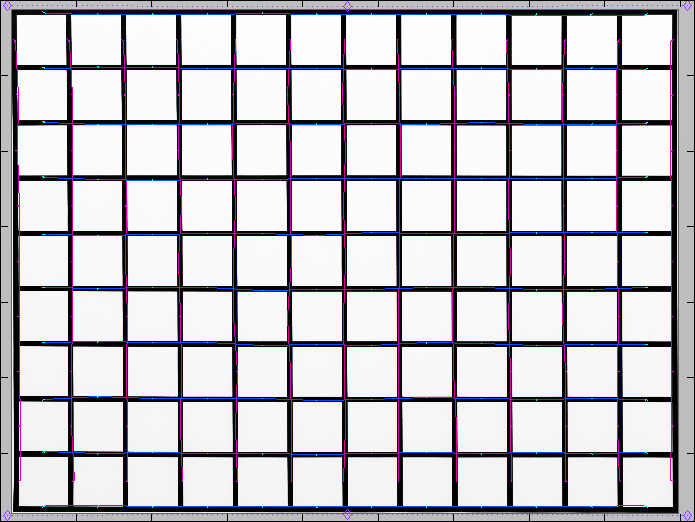|
Olympus M.ZUIKO DIGITAL 60mm f/2.8 ED Macro - Review / Test Report - Analysis |
|
Lens Reviews -
(Micro-)Four-Thirds
|
|
Page 2 of 3

Distortion
Macro lenses tend to have marginal image distortion. This is also true for the Olympus lens - it produces just slight pincushion distortion of 0.6%. This is also the original distortion as present in RAW files rather than an auto-corrected result.

0.6% Pincushion
Vignetting
The light falloff at large aperture settings is generally auto-correction on micro-four-thirds cameras. Consequently this is nothing to worry about at around 0.1EV across the aperture range.
MTF (resolution)
The resolution characteristic of the M.Zuiko is very good albeit not outstanding. The center resolution is already very high at max. aperture but the corners are somewhat softer here although still good. Stopping down to f/4 boosts the center into excellent quality but the sweet spot is really f/5.6 with a very good quality across the whole image frame. Diffraction effects have a slight impact at f/8 and more so at f/11 but the quality remains fine actually. f/16 is not too bad but f/22 should be avoided because diffraction just leaves an image soup here.
Please note that the MTF results are not directly comparable across the different systems!
Below is a simplified summary of the formal findings. The chart shows line widths per picture height (LW/PH) which can be taken as a measure for sharpness.
If you want to know more about the MTF50 figures you may check out the corresponding Imatest Explanations
Chromatic Aberrations (CAs)
A rather surprising aspect is the comparatively high degree of lateral chromatic aberrations (color shadows at hard contrast transitions). They are decent at f/2.8 and f/4 but too high at medium to small apertures at around 1.5px on the average at the image borders. This is not dramatic but unusual for a macro lens.
Bokeh
The quality of the bokeh (out-of-focus blur) is naturally a major aspect for such a lens and the Olympus doesn't disappoint us here. The transitions are very smooth and buttery.
Out-of-focus highlights can show a bit of outlining and an onion-like substructure in critical scenes though.
Bokeh Fringing
There are only next to no traces of Bokeh fringing (colored halos in the focus transition zones) at max. aperture so don't worry, be happy about this one..
|